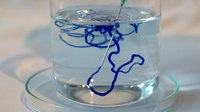
Photo from wikipedia
Abstract In this study, effect of pretreatment on reverse osmosis (RO) fouling was investigated for treating textile secondary effluent (SE), including coagulation, ultrafiltration (UF), magnetic ion exchange resin adsorption (MIEX)… Click to show full abstract
Abstract In this study, effect of pretreatment on reverse osmosis (RO) fouling was investigated for treating textile secondary effluent (SE), including coagulation, ultrafiltration (UF), magnetic ion exchange resin adsorption (MIEX) and their integrations. Laboratory-scale experiments exhibited that organics removal was highest by MIEX, followed by UF and coagulation; the integration of coagulation and MIEX was the most effective pretreatment to mitigate RO fouling. The effect of integrated pretreatment methods on RO fouling was also conducted in pilot-scale experiments. The same result with that of laboratory-scale experiments was obtained that coagulation + sand filter + MIEX as RO pretreatment was superior to coagulation + sand filter + UF. The results of gel permeation chromatograph (GPC) and excitation and emission matrix fluorescence (EEM) showed that the foulants on RO membrane were mainly composed of high molecule weight (MW) protein and soluble microbial products (SMP)-like matter. UF could remove the RO foulants effectively, but mitigation of RO fouling was at the expense of UF fouling. Besides, SEM shown that fouling layer on RO surface became more compact and peak heights of organics were higher on GPC spectra after UF pretreatment than MIEX likely due to the easily deposition of low MW organics in the valleys of RO membrane. Consequently, the integrated coagulation + MIEX was a promising pretreatment method prior to RO for treating textile SE.
Journal Title: Chemical Engineering Journal
Year Published: 2018
Link to full text (if available)
Share on Social Media: Sign Up to like & get
recommendations!